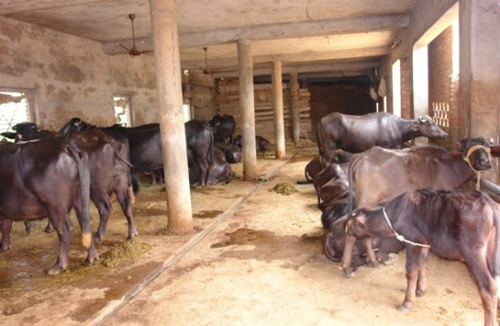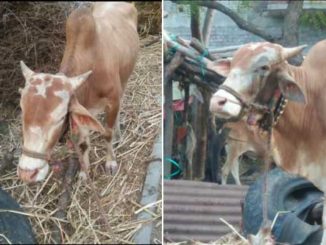History
A 4 year old murrah buffalo was presented at Veterinary hospital, Chaumuha Mathura with a history of excessive consumption of oat meal. While recording anamnesis it was found that buffalo was lying acutely ill for the last two days, and showed loss of defecation.
Clinical Examination
On clinical examination it was observed that animal was recumbent, depressed, and dehydrated with sunken eyes, congested mucous membranes, weak but rapid pulse86/minute and subnormal temperature 96.2º F body temperature. Ruminal fluid was collected and analysed for physical and microscopic examination.
The results revealed absence of protozoal motility, low pH 4.8,milky grey color, foetid smell and thin and watery consistency of ruminal fluid. on percussion of the rumen fluid splashing sound were audible through left paralumbar fossa.

Diagnosis
Diagnosis of acute carbohydrate engorgement was made on the basis of history, clinical presentation and rumen fluid analysis.
Treatment
- Treatment was initiated immediately with 5% sodium bicarbonate followed by hypertonic saline solution along with thiamine, fortified procaine penicillin, multivitamin injection and rumen buffer orally.
- Initially 5 liter of 5% sodium bicarbonate was given intravenously to counteract systemic acidosis and later isotonic sodium bicarbonate 1.3% as fluid therapy was continued to counteract dehydration and to expand plasma volume.
- Fortified procaine penicillin@22000 I.U./Kg /day was given intramuscularly for 5 days to minimize the chances of bacterial rumenitis.
- Thiamine@10mg/kg intramuscular was given to assist the metabolism of L-lactate produced by lactobacillus bacteria. It could also be beneficial in alleviating thiamine deficiency caused by ruminal acidosis.
- Rumen buffer (Buffzone) was given orally to stabilize and restore the rumen microenvironment along with 10 ml multivitamin (conciplex) injected intramuscularly.
- Animal recovered completely after giving this treatment for 5 days.
| The content of the articles are accurate and true to the best of the author’s knowledge. It is not meant to substitute for diagnosis, prognosis, treatment, prescription, or formal and individualized advice from a veterinary medical professional. Animals exhibiting signs and symptoms of distress should be seen by a veterinarian immediately. |






Be the first to comment